In this article, I’ll explain everything about How To Revive A Dead Power Supply? To revive a dead power supply, unplug and discharge capacitors safely. Then, check for damage or burns. Check and replace burned fuses with an appropriate rating.
Replace faulty capacitors or components after testing output voltages using a multimeter. Be careful and seek professional aid if necessary. A dead power supply should be replaced rather than revived if you need more confidence in repairing it to avoid further damage.
How To Revive A Dead Power Supply?
You can revive a dead power supply by checking the fuse, inspecting capacitors, testing the voltage regulators, and checking if there is any physical damage.
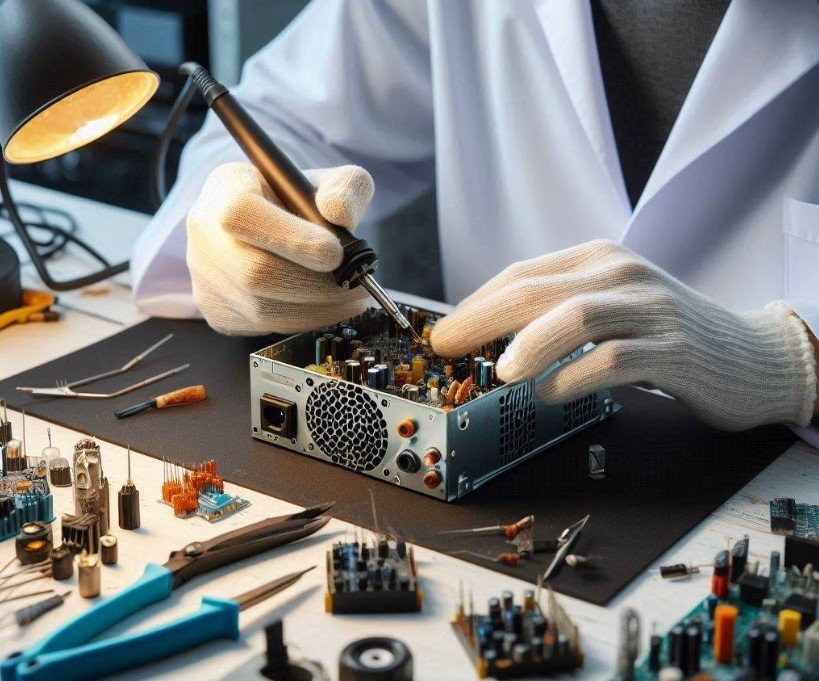
Can You Repair A Power Supply?
Yes. A power supply can be fixed, though it will depend on the particular problem you’re having. However, since most people are not skilled in power supply maintenance, replacing the unit with a new one could often be safer and more economical.
Understanding the distinction between AC and DC power is essential before attempting to repair the power supply. Your device requires DC power, which a power supply transforms AC electricity from your wall outlet into. It’s critical to determine if the AC or DC side of your power supply is having problems if you’re having problems with it.
Modular power supplies may be simpler to fix than non-modular power supplies because you can remove and replace individual components. Even with a modular power supply, you’ll still need to be well-versed in electronics and have troubleshooting experience with power supplies.
By changing the driver, you might be able to fix problems with an LED driver—a part of the power supply that controls the amount of power going to the LEDs. We also provide a thorough tutorial on determining whether an LED driver is defective.
Can You Fix A Dead Power Supply?
Yes. You can fix a power source that isn’t working. When fixing dead power sources, you can either do it yourself (DIY) or hire a trustworthy repair company.
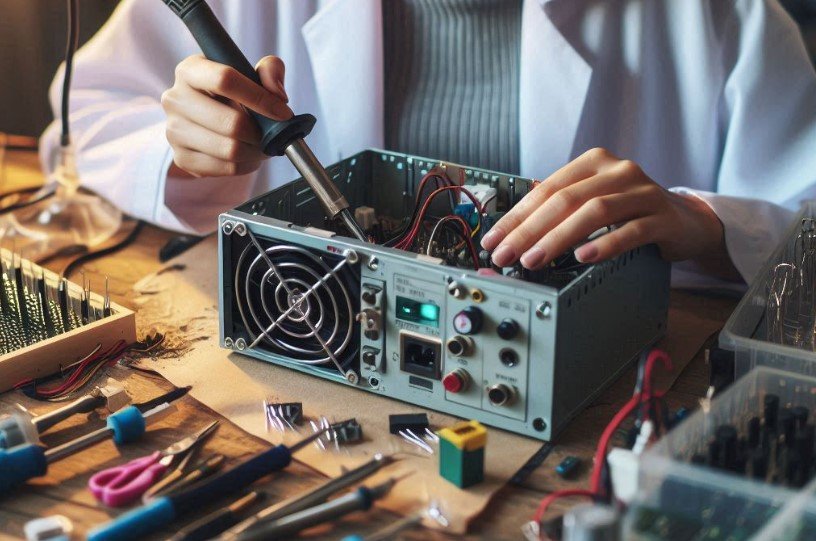
There are good and bad things about both choices, so it’s essential to think about the risks and costs of each. Fixing things yourself can save you money but also make you more vulnerable.
To be safe and keep from doing more damage, you need to know a certain amount about electronics and power sources before you try to fix one. But hiring a repair company you know and trust might be safer and more reliable.
A professional can locate and fix the power source because they will know how to do it and have the right tools and equipment. But it might cost more to hire a professional than to fix things yourself.
It’s important to remember that fixes done by a professional or by yourself are only temporary. If you fix a broken power source, you’ll have to deal with it later. The best thing to do is to get a new, reliable, and efficient power supply from a respected company like Bravo Electro and replace the old one.
How To Deal With A Dead Power Supply?
A backup power supply is the best way to determine whether yours is failing. Disconnect your current one from all your components, connect a new one, start your PC, and observe if the problems persist. Swap testing is simple and informative.

Despite being geeky, I don’t keep a backup power supply in my desk drawer.
(At this point in the article, power supplies shouldn’t be played with. Avoid disassembling yours and starting to look inside. I even get worried about jumping one with a paper clip, a tactic I’ll explain later, but that’s just me.
If you use a multimeter, check your power supply’s manual or website or contact the manufacturer to determine its voltages. You’ll also need a pin readout to verify that your multimeter probes are in the appropriate places and used safely.
You may also buy a cheap power supply tester (examples here) to check for faults rapidly. The tester can spin up your power supply without forcing you to conduct the more involved paperclip-in-the-pins test, which can determine if it turns on. (You may also need to add a couple of case fans to the PSU to load it sufficiently to start it.)
Possible Things To Salvage On A “Dead” Power Supply?
Unless you are really skilled at what you are doing, you should NEVER open a dead power supply. They have massive capacitors within, at the absolute least, which if shorted out might result in a powerful electrical discharge or possibly a small explosion.
Furthermore, unless you get a thrill out of transformer coils and rectifiers, there’s usually nothing really worth salvaging in there anyway.
How Do You Diagnose A Dead Power Supply?
Diagnose a Dead Power Supply with these steps.
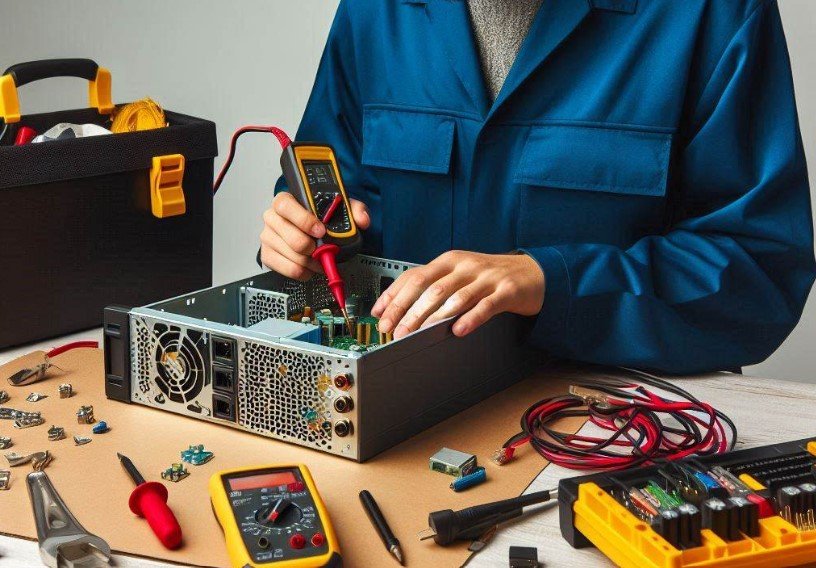
Check symptoms
Suppose your computer has no power when you push the power button, inconsistent power, unusual fan or capacitor noises, burning smell, or damaged components from power surges.
In that case, it may have a defective power supply. Random shutdowns or freezes, no fans or lights, and fried or faulty hardware are possible. These are common signs of a defective power supply and should be regarded seriously. Proceed to examine your power source if any of these symptoms occur.
Power supply test
Second, test your power source using a multimeter, which monitors voltage, current, and resistance. Disconnect your power supply from your motherboard and other components, then short the 24-pin ATX connector’s green and black wires with a paper clip or jumper wire.
This turns on the power supply without a motherboard signal. Then, multimeter probes touch the connector’s colored wires and check their voltage.
Power supply replacement
The final step is to replace your power supply with one that fits your computer and has appropriate wattage for your components. Unplug your previous power supply from the wall and remove it from your case.
Next, place your new power supply in your case and connect it to your motherboard and other components. Follow your new power supply’s instructions and use the proper wires and connectors. After installing your new power supply, start your computer and test it.
Troubleshoot other issues
Troubleshoot other computer issues in the fourth stage. A faulty or bad power supply can destroy devices or corrupt software. You may need to inspect your motherboard, CPU, RAM, GPU, hard drive, and other components for damage or problems.
System scans for viruses, malware, and corrupted data may be needed. You may need to upgrade drivers, BIOS, or OS. If problems persist, consult professionals or online forums.
Symptoms Of PC Power Supply Failure
Here are some common symptoms of PC power supply failure:
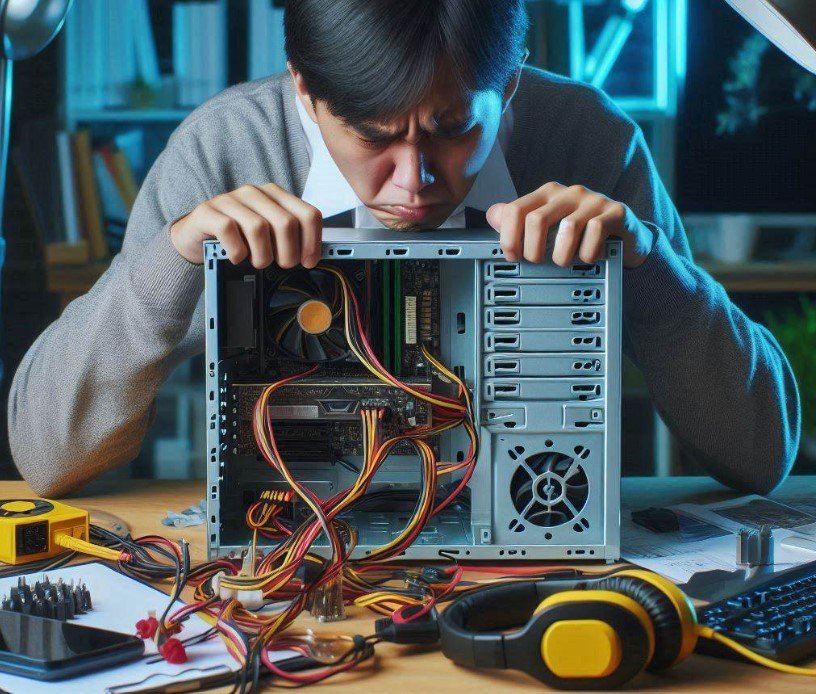
- Odd noises: If a power source produces odd noises, such as buzzing, clicking, or whining, it can be broken.
- Overheating: A power supply that smells burnt or is running hot to the touch may be close to failing.
- No power output: A dead power supply may be indicated if the gadget to which it is attached is not turning on or is not operating as it should.
- Random Shutdowns: A failing power supply may cause a device linked to the power source to randomly shut down.
- Low Voltage: A malfunctioning power supply may cause low voltage readings if the device attached to the power source is not operating as it should and the voltage readings are below the recommended levels.
How To Test Your Power Supply?
You may test your power supply unit (PSU) to see if it’s working correctly or if your system is having trouble turning on. To put your PSU to the test:
- Turn off the power supply.
- Unplug every cable from the PSU, excluding the 24-pin and the primary AC line.
- Find pins 16 and 17 on your cable with 24 pins.
Note: With the clip facing up and the pins facing you, count from the left to locate pins 16 and 17. As you count from left to right, these will be the fourth and fifth pins, as the sample photo below illustrates.
- Bend the paper clip so the ends fit into pins 16 and 17.
Note: Place the ends of whatever PSU jumper you use into pins 16 and 17.
- Switch the PSU on.
- Check if the PSU fan rotates. If so, the PSU is operating as it should.
Note: A zero-RPM function found in many Corsair PSUs causes the fan to spin for a brief period after it is turned on. This suggests that the PSU is still operating as intended.
How To Repair A Dead Power Supply Without Replacing?
You may fix a dead power supply without replacing it by following these steps:
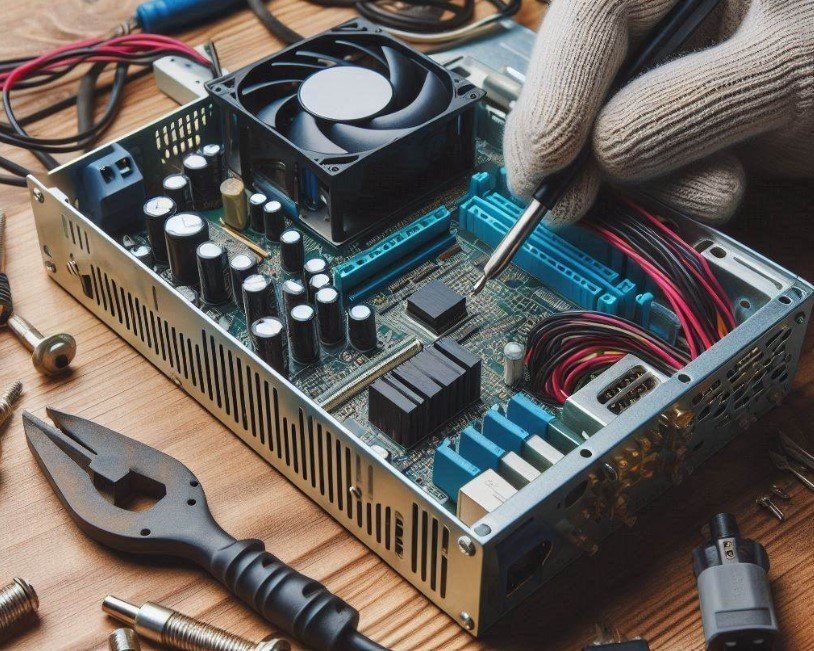
- It’s possible that a fuse in the power supply blew, keeping it from turning on. If the fuse blows, replace it.
- Power supply failures are frequently caused by malfunctioning or leaking capacitors. Check the capacitors for any indications of leaks, bulging, or other damage. If any capacitors malfunction, the power supply probably needs to be fixed.
- Examine the regulators for voltage. Using a multimeter, make sure the power supply’s voltage regulators are producing the right output voltages. If they are malfunctioning, they must be replaced.
- Examine the area for any physical damage, burn marks, or indications of overheating that might be contributing to the failure. If physical damage is detected, the power supply may need to be replaced or repaired.
- Some power supplies need a “power on” signal to initiate the power-up sequence. This signal can frequently be skipped to test and compel the power supply to turn on.
- If everything else fails, you may attempt to fix the power supply yourself, but this will need technical know-how. You can replace malfunctioning parts like regulators or capacitors if you have the necessary instruments and abilities.
How To Repair A Power Supply Yourself? Or How To Make A Power Supply Work Again?
You’ll need to understand the procedure if you’re going to fix your power supply yourself. Now, let’s discuss How To Make A Power Supply Work Again?
Identify the Problem
Determine the precise problem that is causing the power supply to malfunction. Is there a burned resistor, a malfunctioning capacitor, or a broken connection? Comprehending the issue is essential for a successful fix.
Collect the Required Equipment and Supplies
Ensure you have the necessary equipment, such as a desoldering pump, a soldering iron, replacement parts, and a secure work area. Safety is crucial when handling electronic components.
Conduct Repairs
Replace or fix the malfunctioning parts cautiously, be mindful of soldering methods, and handle electronic components appropriately. For comprehensive instructions, adhere to recommendations from dependable sources.
Examine the Repaired Power Source
Test the power supply following the repair to ensure the problem is fixed. Measure the output voltage with a multimeter to ensure it complies with the requirements.
What Is Power Supply Repair Cost?
Depending on where you get the item, if you’re doing it yourself, it might cost anywhere from $50 to $125. A licensed establishment should handle it, costing between $175 and $100. Naturally, this depends on the particular TV.

What Happens If The Power Supply Dies?
If a power supply is unable to deliver a steady power source, the system may randomly crash or shut down. This can result in data loss, which is especially troublesome for those whose computers or other devices they need for work-related or crucial tasks.
Should You Repair A Broken Power Supply Unit?
Yes. It can be complicated, though. Your power supply’s repairability will rely on several elements, which are listed below:
Cost
There are two components to price. It would help if you first weighed the cost of repairs against the original purchase price. Sometimes, it’s advisable to replace it entirely, mainly if the power supply was purchased for less than $250.
Second, if buying a new power supply is lower than or equal to the repair cost, it may make more sense to do so, even if the new supply is significantly more expensive.
Availability
There are two options available as well. Certain power supplies were manufactured by businesses that have long since stopped producing them. In these situations, it’s frequently challenging to obtain replacement components for the component on the market, so your only choice is to buy a new one.
However, getting new or refurbished entire units can be challenging, particularly for highly specialized and legacy devices. As a result, you will unavoidably need to fix your item.
Sustained Damage
Everything could be in order: parts are accessible, and the cost of the repair is reasonable. But it’s possible that your unit is beyond repair. Water damage is usually disastrous and requires replacement. Damage from fire is also!
Why Do PC Technicians Not Usually Repair Power Supplies?
Power supply repairs are generally not performed by PC experts for the following reasons: Power supplies are intricate electronic devices with high-voltage circuitry.
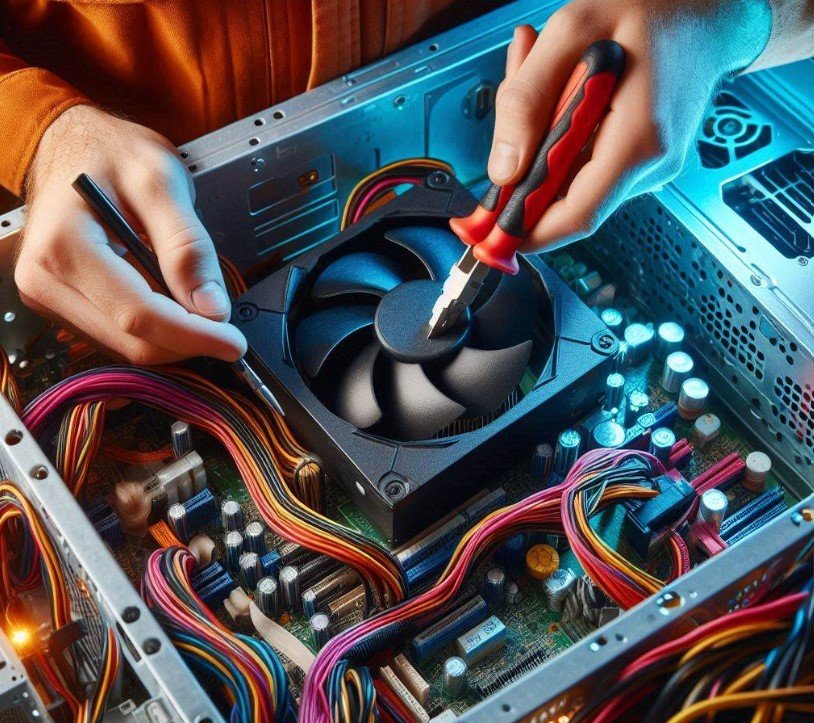
It takes specific training and tools and cautious handling to reduce the chance of electric shock and other safety risks to repair them. Most technicians must gain the knowledge and experience to identify and fix defective power supplies correctly.
Replacing a malfunctioning power supply is often less expensive than trying to fix it. Diagnosing and repairing a power supply can be labor-intensive and time-consuming compared to just replacing the unit. Power supplies are relatively inexpensive components.
A fixed power supply that malfunctions again or damages the PC further could result in liability for the technician. To ensure the system is secure and dependable, most professionals would instead not take this chance and only advise changing the power supply.
Power supply testing and repair require specialized instruments and equipment, like load testers and high-voltage multimeters. This specialist equipment is only available to a few general PC technicians.
Most PC technicians are not experts in power supply repair; they usually concentrate on other frequent hardware problems and software troubleshooting. To acquire the expertise required to fix power supply with reliability, technicians would need to undergo extensive training.
Why Do Power Supplies On Computers Die So Frequently?
Because of too many things, they fail. I created them in the past and fixed them now, so I know for sure that you get what you pay for. If you pay more for one, it should have better parts. But what’s more important is that more and more businesses are cutting corners when they make things these days.
Many use capacitors or other parts that barely work as they should. Many people use broken parts, like Samsung TV power sources and Lenovo tower motherboards.
Many of them are made in a way that causes them to burn out, like putting parts too close to heat sources or not letting them cool down enough while they’re being used. Many people change things during the building process and use lower-quality parts instead or leave out parts on purpose to save money when making many of them.
Some people don’t use the filters, so they hear the buzzing in a radio close. Some people use one diode instead of the full wave bridge rectifier to make a half-wave rectifier. Some people remove the fuses and put a jumper wire in their place.
Some people use jumper lines instead of filter chokes. Some people need to put all of the output filter caps in. Some people don’t use connectors for the fans and instead solder the lines straight to the PCB.
There are many other reasons besides the changing input power that lead to the design changes listed above that cause them to die. Besides these problems, you should also know that an overloaded PSU device will break.
If your PSU can handle 300W, you shouldn’t put more than 210W of power demands on it. When figuring out how big of a PSU a machine needs, 0.7 is a good and safe number. If you use more, you could have an enormous power load that strains the PSU when it turns on or spikes while running.
How Long Do Power Supply Units Last?
The longevity of a power supply varies based on factors like quality, consumption, environment, and maintenance. A good power supply should last five to ten years on average. However, some units can last over ten years if properly maintained.
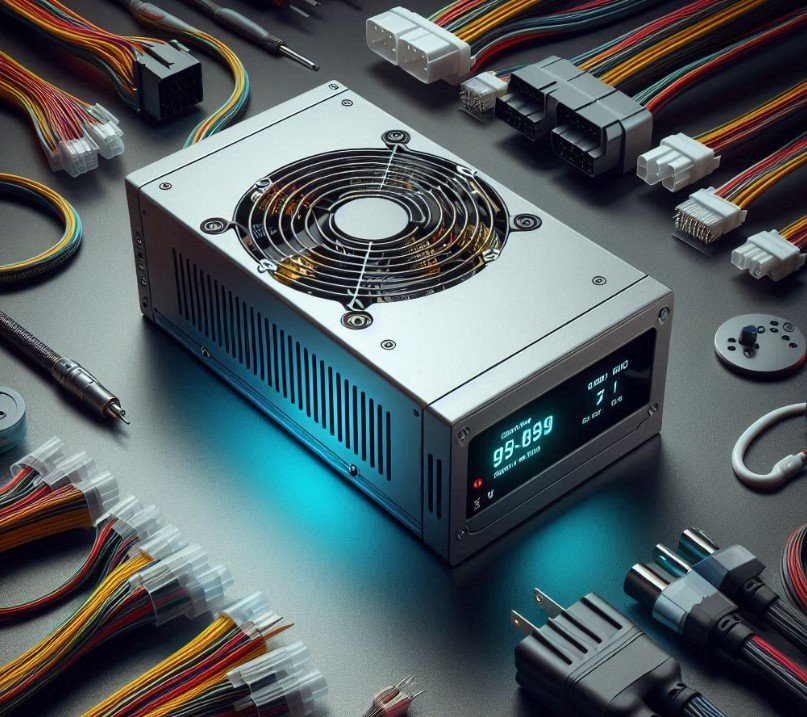
You may choose the ideal power supply for your purposes by being aware of the differences between AC and DC power and the power supply voltage, increasing the power supply’s lifespan.
What Will Happen, If The Power Supply Of A PC Is Too Weak?
If your PSU is too weak, your system will probably shut down.
PC Doesnt Turn On, Is My PSU Dead?
A dead PSU would crackle, blow up, and so forth. Verify that the power supply switch is turned on, that your drives are linked, that your motherboard can be tested on a test bench, and that the RAM is inserted correctly. A dead PSU is probably not the solution because there are many other possibilities.
How Can I Reuse A Dead Power Supply Unit Of A Desktop PC?
A dead desktop PC power supply unit (PSU) can be reused in the following ways:
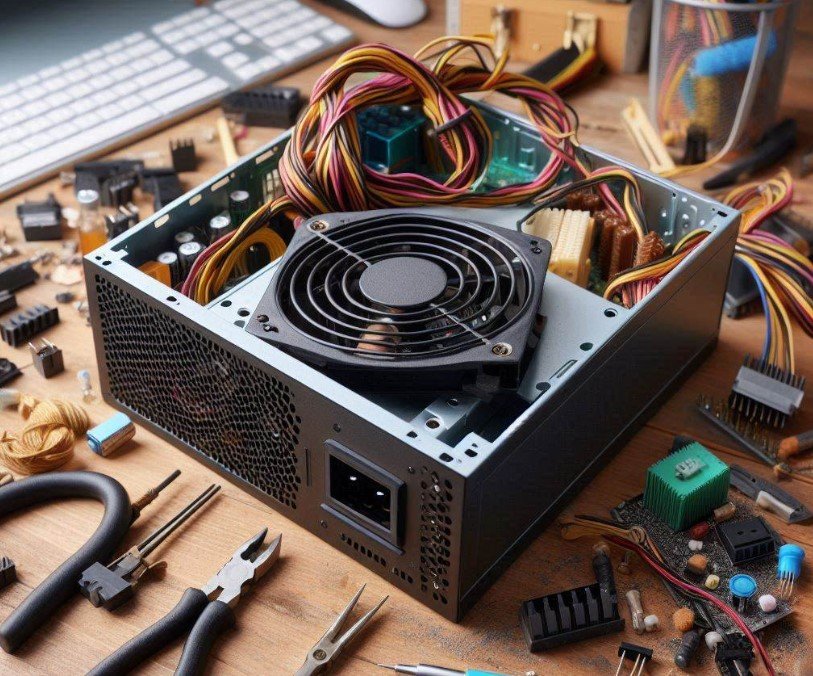
- Apply it as a bench power supply. By adding the necessary connectors, you can use the PSU to power different electronic projects and prototypes on your workbench. You can also tap into the various voltage rails (such as +3.3V, +5V, and +12V) to power circuits.
- Make it into a lab power supply. More skilled users can alter the PSU to produce a variable power supply with features for current and voltage limitations. This entails putting in more controllers and electronics.
- Gather the elements. Transformers, inductors, capacitors, and diodes are among the valuable components found in the PSU that can be used in other electronics projects. You can also repurpose the fans.
- Apply it to low-power tasks. Even though the PSU may not be able to power a desktop PC, it can run little gadgets like LED lights, Raspberry Pis, or other electronic projects.
- Recycle the metal components and case. Even if the PSU is completely broken, you can recycle the metal, plastic, and electronic parts separately and dispose of the unit responsibly.
Why Isn’t My Computer Turning On, But Is Getting Power?
For several reasons, a PC may refuse to switch on even when it is plugged in. One explanation can be that the power cord is not inserted into the outlet or the PC properly.
The failure of the PC’s power supply is a further possibility. Sometimes, a virus or malware infection prevents the PC from turning on even though it is plugged in. In this scenario, you must clean your PC of unwanted software and scan for viruses.
The section that follows might provide a workable answer. Seeking advice from a computer specialist who can identify and resolve the issue is recommended if you need clarification about the problem.
Is A Cheap Power Supply Worth It For An Old Junk PC?
No. Your machine might only work smoothly on a cheap PSU if it has enough power! A computer with insufficient power will not function correctly. Furthermore, a cheap PSU may fail throughout its short lifespan. If the PSU fails, you can be left with a box of worthless parts.
Can I Upgrade A Power Supply On Any PC?
Yes, you can do this. Your power supply might need more watts or amps to sufficiently power every component in your computer when modifications are made to it, or new parts are introduced.

Launch a CPU/GPU demanding software and turn on as many of your PC’s components as possible simultaneously to test your power supply. Your present power source should be adequate for your current power draw requirements if everything functions properly and there are no problems.
If you have any issues running several devices at high load, it may be time for a power supply upgrade. To be exact, you can figure out how much power your PC’s components need overall and compare that to your power supply’s wattage rating.
Installing a new power supply that can manage the necessary wattage with enough headroom to spare is a safe option if the wattage your current power supply offers is insufficient or hardly adequate.
Additionally, the simplest solution to any technical issues with a power supply is to replace it with a brand-new one. Extended unplugging can leave power supplies with a significant amount of charge.
Attempting self-service maintenance on a malfunctioning power supply would be extremely risky. Don’t take a chance, as they are reasonably priced.
Is It Good To Buy A Used Power Supply For A PC?
No. Purchasing a used power supply for a PC is not a good idea. Well, that wouldn’t be the wisest course of action. However, it might succeed. If not, it will probably die and destroy the CPU and MB.
Then, the only thing lost is money. The crucial aspect is that no data are lost. If it works, it will probably continue to function for a while. However, since it may malfunction at any time, data would only be recovered if there were numerous off-site backups.
Should You Reuse Your PC Power Supply In A New Build?
You can reuse your old PC’s power supply in a new build. If the power supply still has adequate connectors for your new motherboard, you should keep it.
I would choose a new one because they can get worn out over time. It is worthwhile to preserve the optical drive. To spread out the cost of the update, consider keeping the GPU for a while.
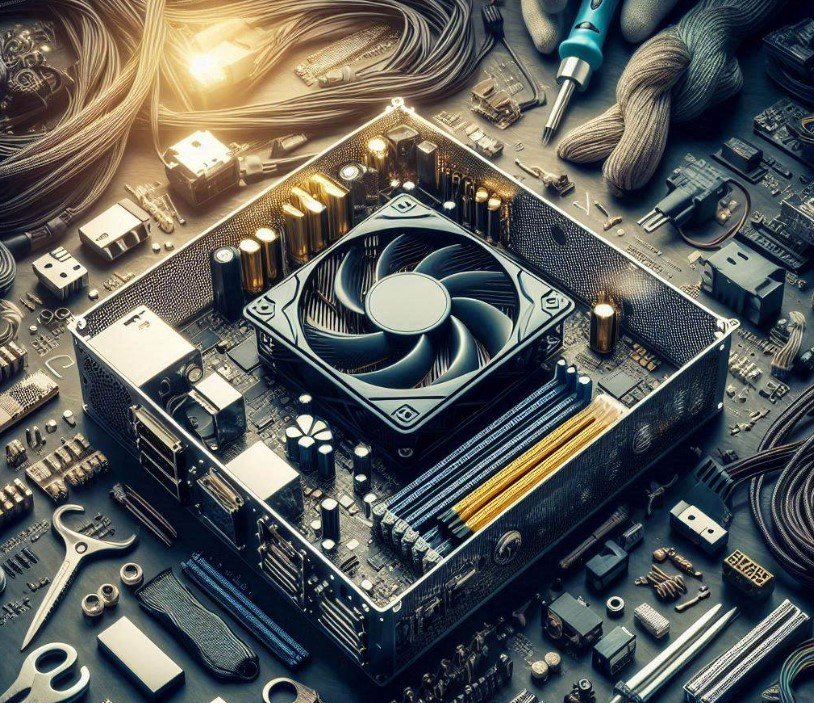
But unless the same company makes your new GPU as the previous one, I wouldn’t advise doing this (moving between NVIDIA and AMD might be tricky). It is essential to consider what you plan to do with the outdated parts.
During my most recent rebuild, I constructed a new home theater PC using the outdated motherboard, CPU, RAM, power supply, GPU, and hard drive. I upgraded everything at once because of this.
Dead PSU With No Cables, Can It Be Salvaged Or Fixed?
If you have a multimeter and basic soldering tool then you can try to fix Dead PSU With No Cables. But, if the PSU is still covered by warranty, you can send it back for repair and get a new set of cables. Check the status of the warranty with EVGA.
How To Know If It’s A Dead Motherboard Or Dead PSU?
One of the simplest ways to determine whether your motherboard or power supply has hardware problems is to look for any visible evidence of damage, such as burns, cracks, leaks, or bulges. These symptoms could mean that your power supply or motherboard has shorted out, overheated, or been overcharged.
You can check them by opening your computer case and closely inspecting the motherboard and power supply with a flashlight. It’s best to immediately replace the damaged component if you see any visible damage.
Is Your Power Supply Even To Blame?
No, the power supply isn’t always at fault. The symptoms and test findings will determine this.
Conclusion
One thing about the power supply is sure: problems can occur at any time, leaving you perplexed and frustrated. But do not worry! Power supply diagnosis and repair don’t have to be complex procedures. Generally speaking, getting a new device from Bravo Electro or another reliable supplier is safer and more economical.
Our selection of power supplies is extensive and includes AC DC LED drivers, open-frame power supplies, DIN rail power supplies, and enclosed power supplies. In addition, we offer top-notch customer support and tailored solutions for particular needs.
Frequently Asked Questions
Can you turn on a dead PSU?
Flip the power switch on the device. If nothing occurs, the PSU has to be replaced because it is dead. If the fan turns, it is getting power. Check the PSU’s voltage output with a voltmeter and compare the results to the manufacturer’s specifications.
What harms a power supply?
Reduced efficiency and high heat-related power loss are the primary results. Although overheating significantly contributes to device component damage, it’s not the sole indication of a shoddy or inadequate power supply.






